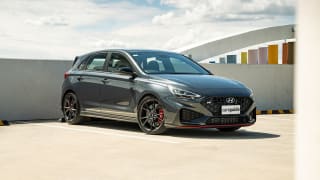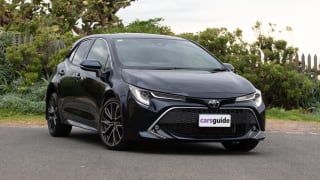The GT is priced at $35,290 before on-road costs regardless of whether you opt for the four-door sedan (as tested here) or the five-door hatchback, though be aware that Kia Australia regularly runs drive-away pricing campaigns.
There’s not a lot of competition in the warmed-up small car market these days. A number of carmakers have slimmed down their small-car line-ups in the face of falling sales.
Kia’s closest rival is also its mechanical sibling, the Hyundai i30 N-Line sedan and hatch. The Hyundai is cheaper by more than $2500, but the more generously equipped i30 N-Line Premium sedan is a little over $2000 more expensive than the Cerato GT.
The Mazda3 GT sedan and hatch could also be considered a rival and pricing is about on par with the Kia.
Other lower grades in the Cerato range run from $25,490 to $30,640 (MSRP).
The GT benefits from the more premium powertrain offering in the Cerato line-up – the 1.6-litre turbocharged four-cylinder engine shared with the i30 N-Line and the recently discontinued Veloster Turbo.
The GT bodykit adds sporty styling flourishes like a black front and rear diffuser, boot spoiler, dual exhaust, black external mirror caps, red highlights and 18-inch GT alloy wheels.

This theme carries through to the cabin too with features like alloy sports pedals, flat-bottom perforated leather sports steering wheel and leather-appointed seats with red stitching and embossed GT logo.
As the range flagship, the GT also has the most standard equipment. It comes with a sunroof, eight-way power driver’s seat, wireless device charging, an eight-speaker JBL premium sound system, heated and ventilated front seats and dual-zone climate control air conditioning.
The only option fitted to the test car was Snow White Pearl premium paint for $520.




























